 That said, a good acclimatization is the key to success to conquer the highest peaks.
That said, a good acclimatization is the key to success to conquer the highest peaks.
Tim Say:
My alarm went off at 2:30 AM, and shivering in my tent, I forced myself to eat and drink
as much as I could-3 granola bars and several cups of warm tea were all I could manage.
A hot water bottle went into the inner pouch of my jacket (to prevent freezing), and
it was time to move. Leaving at 3:15 AM, the grating of crampons on rock, quickly turned
to the quiet crunch of Andean snow, with pristine snowflakes from the previous day’s
flurries sparkling under the headlamp. Climbing at altitude is a slow and rhythmic
process. Throw into that the 10-12 degree F temps, and a stiff 20-30 mph wind, and you
don’t want to stop for fear of getting too cold. I forced myself to drink water when I could,
but the main focus was only on steady upward progress into the starry night. And with
each 1000m gain in altitude, the progress became that much more difficult. The route
wound around crevasses, worked up through penitentes, jogged right, and then left, as
we hit the brunt of the upper level winds. The route crossed a thin crevasse bridge and
then steepened to 45 degrees. Upwards we went, swinging our ice axes and kicking
steps steadily into the night, perfect conditions and perfect purchase for the crampons
and ax. Finally the route leveled out, crossed a bergschrund and climbed steeply again
to the summit ridge, just as the upper mountain was being washed in pink light.
 We put our heads down and trudged along the summit ridge into the rising sun,
We put our heads down and trudged along the summit ridge into the rising sun,
topping out four hours after leaving the high camp, in time to see the mountain cast a
long shadow out across the Altiplano. At this elevation it felt like we were flying over
the landscape, the earth curving away to the north to Titicaca, to the west to the
famous Sajama mountain and the Bolivia’s volcanic range behind them, and a sea of
clouds to the east over the Amazon. Two minutes was about all we could stand of the
cold and wind on the summit before heading back down. As the sun warmed us on
the way down, we could finally slow down and enjoy some of the sun’s warmth,
admire the landscape, massive fluted faces, giant crevasses and icefalls, and the Brown
of the Altiplano in the distance. I thank my guide, Eduardo Mamani, for skillfully and
safely leading the way to the top of this beautiful and complex mountain, a mountain
he knows intimately through hundreds of ascents over the last 25 years. Every part
of the climb, including the drive out from La Paz, and the approach hike, on which two
rare Andean condors soared overhead, were spectacular.
Eduardo encouraged frequent stopping and photography to appreciate the sights along
the way. Eduardo is a strong climber and professional guide, and his friendly personality
and sense of humor will ensure you have an unforgettable experience in Bolivia.

